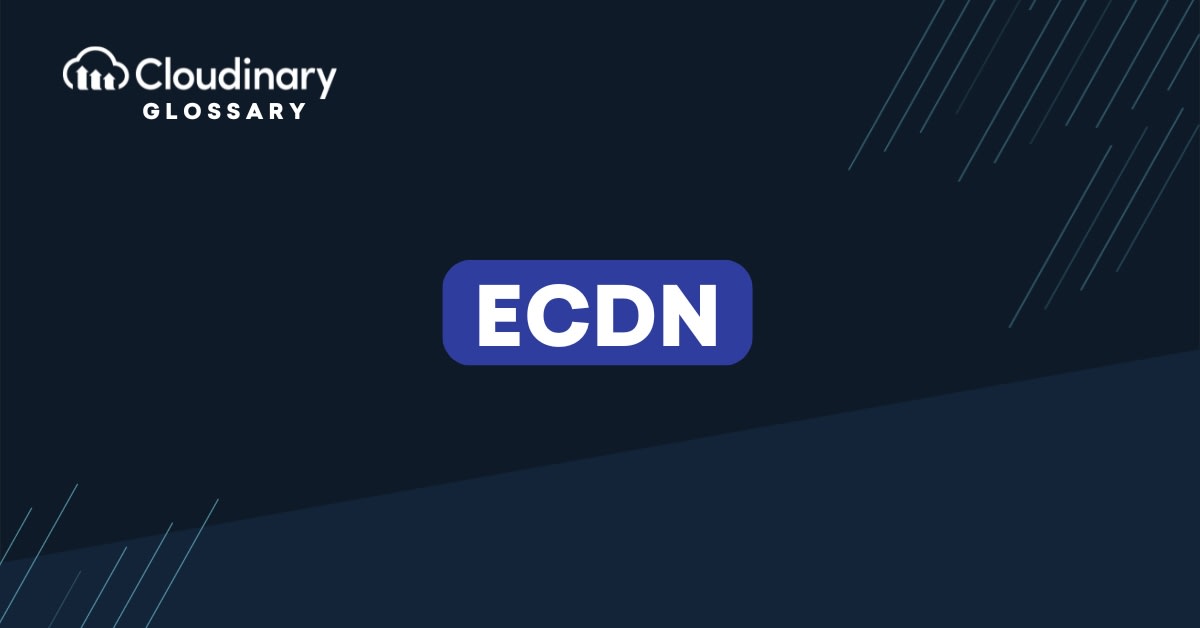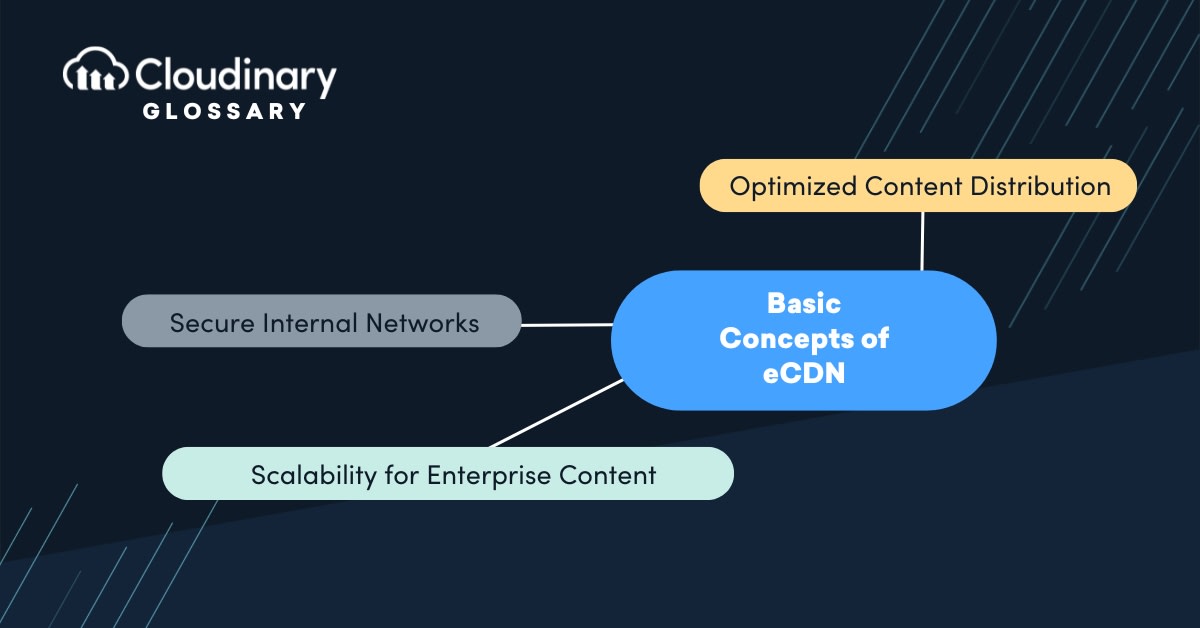
What is an eCDN?
An enterprise content delivery network, or eCDN, is a particular type of network solution that enterprises use to make the delivery of video, audio, and other content better in their corporate environment. While a traditional CDN focuses on delivering content to users across the internet broadly, eCDNs are tailored to address internal content needs within companies; such as streaming live events, all-hands meetings, training sessions, and more.
Unlike public-facing CDNs, eCDNs operate behind the firewall and focus exclusively on internal audiences within an organization, ensuring content delivery is fast, reliable, and secure.
The Basic Concepts of eCDN
To better understand eCDNs, let’s look at their core principles and how they function:
- Optimized Content Distribution: eCDNs employ caching and peer-to-peer (P2P) delivery mechanisms to reduce the bandwidth bottlenecks typically caused by streaming large amounts of data (e.g., corporate webinars or large-scale virtual town halls).
- Secure Internal Networks: All content delivered through eCDNs stays within the company’s internal network, ensuring compliance with privacy and security regulations. This is essential for sensitive corporate data.
- Scalability for Enterprise Content: eCDNs can dynamically scale across thousands of users, providing consistent content delivery regardless of geography or the size of the audience.
eCDNs are specifically built to optimize enterprise scenarios like:
- Live video streaming for company meetings or events
- On-demand access to training materials or video archives
- Content delivery for applications and platforms used within the organization

eCDN vs CDN: What’s the Difference?
While both eCDN and traditional Content Delivery Networks (CDN)s share a core concept (delivering content efficiently) they differ in their target audience, use cases, and architecture.
Target Audience
- eCDN: Focuses on delivering content to internal corporate users, such as employees within an organization.
- CDN: Aims to serve public internet users, ensuring fast content delivery on global websites and applications.
Focus
- eCDN: Optimizes the delivery of videos, training materials, and internal apps within an enterprise.
- CDN: Improves the performance of websites, videos, and online assets for external, global audiences.
Content Scope
- eCDN: Primarily handles internal video streaming (e.g., live events, training modules) and corporate content.
- CDN: Delivers a wide range of digital content, from images to website files, to users worldwide.
Security
- eCDN: Operates within a company’s internal network, ensuring stricter security and compliance with corporate policies.
- CDN: Typically functions on the public internet, with data hosted and delivered through external, global edge servers.
Delivery Mechanism
- eCDN: Employs techniques like peer-to-peer (P2P) delivery and internal caching to reduce bandwidth consumption within corporate networks.
- CDN: Utilizes globally distributed edge servers for optimized content delivery over the internet.
The Benefits and Drawbacks of eCDNs
Benefits of eCDNs
- Enhanced Content Performance: eCDNs provide a flawless playback experience even when streaming heavy content like live video events to thousands of employees.
- Reduced Bandwidth Consumption: By using technologies such as caching or peer-to-peer delivery, eCDNs minimize the strain on corporate networks, avoiding bandwidth bottlenecks.
- Improved Security: Content distributed through eCDNs is kept within an organization’s firewall, ensuring it is highly secure and compliant with data protection policies.
- Scalability at Enterprise Level: eCDNs are built for distributing content to large, geographically dispersed workforces, enabling businesses to scale reliably to meet their communication needs.
- Cost Efficiency: By optimizing bandwidth internally, eCDNs save costs associated with overloading infrastructure or installing additional hardware during high-demand events.
Drawbacks of eCDNs
- Initial Setup Costs: Implementing an eCDN solution might require upfront costs, especially for custom integrations or specialized infrastructure.
- Complexity in Deployment: Enterprises may face challenges integrating eCDNs into existing IT systems, particularly in hybrid environments.
- Dependency on Network Health: Since eCDNs operate within corporate networks, their efficiency depends on the strength and reliability of that network. Poor network health can hinder performance.
- Limited to Internal Use: Unlike CDNs, eCDNs are not designed for public-facing websites or services and are limited to internal enterprise users.
Last Thoughts
eCDNs have rapidly become indispensable for enterprises seeking efficient, reliable, and secure delivery of internal content. From live-streaming town halls to providing on-demand video resources, eCDNs offer unmatched scalability and bandwidth optimization tailored for corporate environments.
While they differ significantly from traditional CDNs in terms of purpose and functionality, eCDNs address the growing demands of organizations with large, dispersed workforces that rely on smooth digital communication. Despite minor drawbacks like deployment complexity, their benefits far outweigh these challenges, making them a critical tool for modern businesses.

